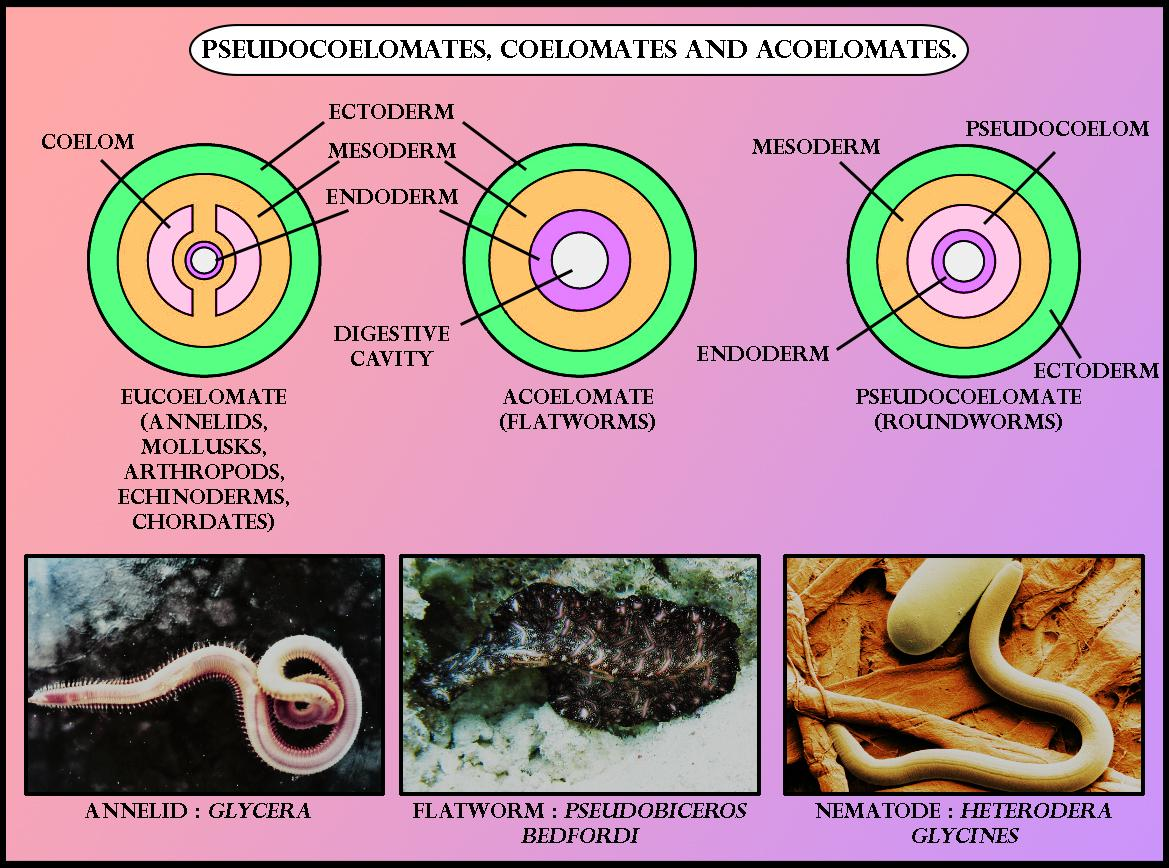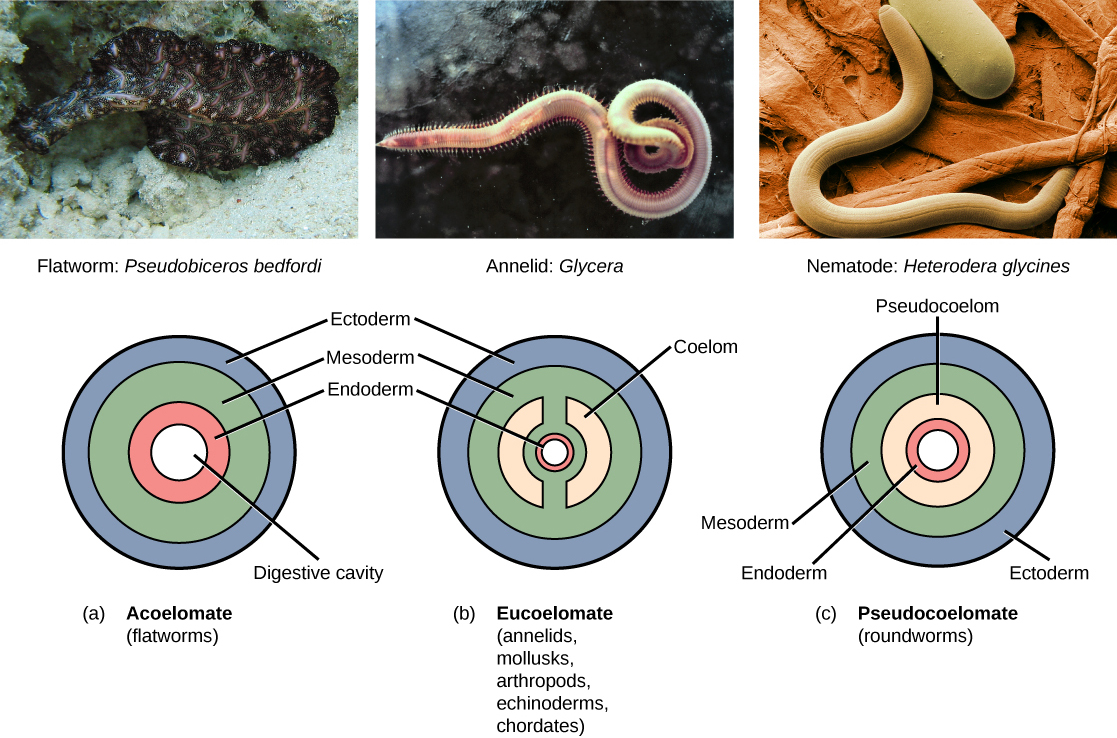
Which of the following is Pseudocoelomate.
(a) Leech
(b) Liver fluke
(c) Hookworm
(d) Jellyfish
Answer
576.6k+ views
Hint: An organism in which the body cavity that is not derived from the mesoderm, as in a true coelom, or body cavity. Mainly three types are found called Eucoelom, pseudocolor, and Acoelom.
Complete answer:
Pseudocoelomate animals have a pseudocolor (literally "false cavity"), which may be a fluid filled body cavity. Tissue derived from mesoderm partially lines the fluid filled body cavity of those animals. Thus, although organs are held loosely, they're not also organized as during acoelomate include. Aschelminthes are pseudocoelomates and in this Hookworms are pseudocoelomic.
Classification of animals is easy when considering their morphological characteristics. Accordingly, the presence and absence of a body cavity, as well as, the type of it have provided the scientists with the major criterion for classification.

Coelom can support an immune system within the type of coelomocytes which will either be attached to the wall of the coelom or may float about in it freely. The coelom allows muscles to grow independently of the body wall — this feature is often seen within the alimentary canal of tardigrades which is suspended within the body within the mesentery derived from a mesoderm lined coelom.
So, the correct answer is (c) Hookworm.

Note: The pseudocoelomate phyla include Gastrotricha, Rotifera, Nematoda, Nematomorpha, Kinorhyncha, Loricifera, Acanthocephala.
- Major examples of coelomate animals include mollusks, arthropods, echinoderms, and chordates.
- The acoelomate phyla include Placozoa, Porifera, Cnidaria, Ctenophora, Platyhelminthes, Mesozoa, Nemertea, Gnathostomulida
Complete answer:
Pseudocoelomate animals have a pseudocolor (literally "false cavity"), which may be a fluid filled body cavity. Tissue derived from mesoderm partially lines the fluid filled body cavity of those animals. Thus, although organs are held loosely, they're not also organized as during acoelomate include. Aschelminthes are pseudocoelomates and in this Hookworms are pseudocoelomic.
Classification of animals is easy when considering their morphological characteristics. Accordingly, the presence and absence of a body cavity, as well as, the type of it have provided the scientists with the major criterion for classification.
| Coelomates | Acoelomates | Pseudocoelomates |
| These animals possess body cavities that are lined by the mesoderm. | The body cavity is absent in these animals. | These animals possess a body cavity but it is not lined by the mesoderm. The mesoderm is present in patches In these animals between ectoderm and endoderm. |
| Chordates, Annelids, Arthropod, Echinoderms | Platyhelminthes | . Aschelminthes |

Coelom can support an immune system within the type of coelomocytes which will either be attached to the wall of the coelom or may float about in it freely. The coelom allows muscles to grow independently of the body wall — this feature is often seen within the alimentary canal of tardigrades which is suspended within the body within the mesentery derived from a mesoderm lined coelom.
So, the correct answer is (c) Hookworm.

Note: The pseudocoelomate phyla include Gastrotricha, Rotifera, Nematoda, Nematomorpha, Kinorhyncha, Loricifera, Acanthocephala.
- Major examples of coelomate animals include mollusks, arthropods, echinoderms, and chordates.
- The acoelomate phyla include Placozoa, Porifera, Cnidaria, Ctenophora, Platyhelminthes, Mesozoa, Nemertea, Gnathostomulida
Recently Updated Pages
Why are manures considered better than fertilizers class 11 biology CBSE

Find the coordinates of the midpoint of the line segment class 11 maths CBSE

Distinguish between static friction limiting friction class 11 physics CBSE

The Chairman of the constituent Assembly was A Jawaharlal class 11 social science CBSE

The first National Commission on Labour NCL submitted class 11 social science CBSE

Number of all subshell of n + l 7 is A 4 B 5 C 6 D class 11 chemistry CBSE

Trending doubts
What is meant by exothermic and endothermic reactions class 11 chemistry CBSE

10 examples of friction in our daily life

One Metric ton is equal to kg A 10000 B 1000 C 100 class 11 physics CBSE

1 Quintal is equal to a 110 kg b 10 kg c 100kg d 1000 class 11 physics CBSE

Difference Between Prokaryotic Cells and Eukaryotic Cells

What are Quantum numbers Explain the quantum number class 11 chemistry CBSE




